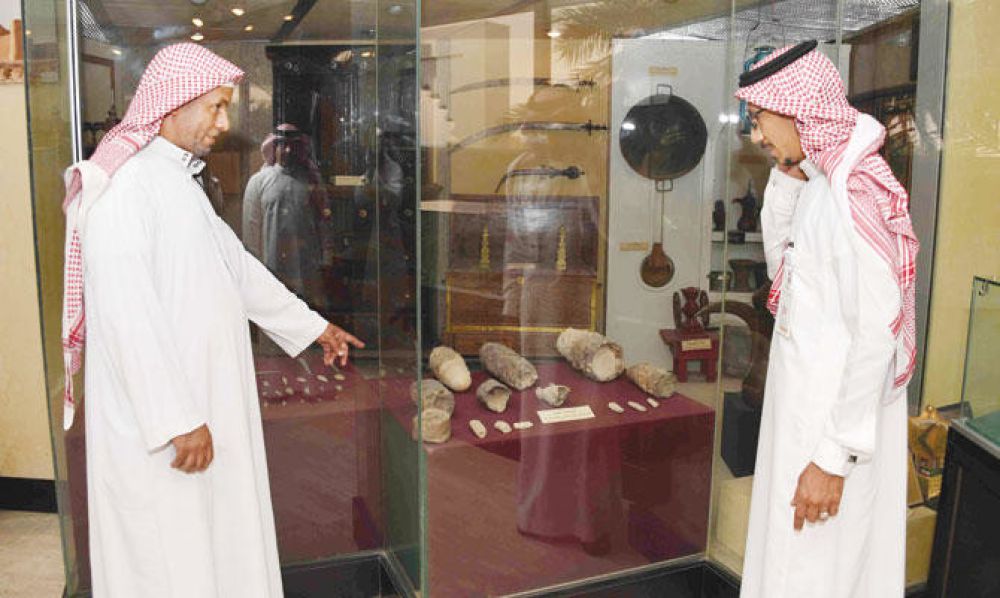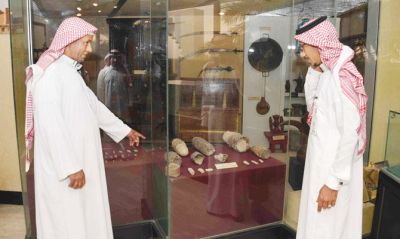

The Al Ahsa Museum in Saudi Arabia provides a rich and educational guided historical tour for visitors. As you walk through this cultural establishment, you're immersed in the astonishing history of the Al Ahsa region, which stretches back thousands of years. The museum showcases artifacts from various periods, including the Stone Age, the Hellenistic period, and Islamic eras. Through informative displays and engaging storytelling, knowledgeable guides unravel the area's archaeological significance and its role in Arabian history. The tour also features traditional costumes, handicrafts, and tools, offering a tangible connection to the daily lives of ancient inhabitants.
At Al Ahsa Museum, cultural workshops provide a hands-on experience for visitors interested in learning more about the region's rich traditions. These workshops vary from traditional craft making, such as pottery and weaving, to sessions on Arabic calligraphy. Each workshop is designed to inspire creativity and a deeper appreciation of Saudi heritage. Under the guidance of expert artisans, participants have the opportunity to create their own masterpieces, providing a memorable keepsake from their visit to the museum. The workshops are suitable for all ages, making it an excellent activity for families or individuals looking to delve into local arts and crafts.
Al Ahsa Museum is a repository of the region's archaeological treasures, offering fascinating exhibitions that detail the prehistoric and historic periods of Al Ahsa. The displays include ancient pottery, jewelry, coins, and tools discovered in surrounding archaeological sites. As visitors explore the exhibitions, they learn about the trading connections Al Ahsa had with civilizations across the Arabian Peninsula and beyond. Each item is carefully curated to tell a story of survival, commerce, and daily life, providing insights into the sophistication of early inhabitants. Expert commentary is available, enabling a deeper understanding of the exhibits' significance.
The museum doesn't just cater to history buffs but also to photography enthusiasts. With its unique architecture and the captivating artifacts it houses, the Al Ahsa Museum serves as a perfect backdrop for photography sessions. From the beautifully adorned halls to the meticulously maintained artifacts and exhibits, the museum offers a variety of scenes for both amateur and professional photographers. Visitors can capture the essence of Al Ahsa's history and tradition. It's important to check the museum's photography policy ahead of time, as there might be restrictions on the use of tripods or flash in certain areas.
The Al Ahsa Museum offers a variety of educational programs tailored specifically for children. These programs are designed to be interactive and engaging, sparking the curiosity of younger visitors about the rich history of the region. Activities might include storytelling, puzzles, and games that revolve around the museum's exhibits and artifacts. Children can learn about archaeological techniques, historical events, and the importance of preserving cultural heritage. The programs are both fun and informative, allowing children to have an enjoyable learning experience within the museum's walls.
Al Ahsa Museum frequently hosts art exhibitions that feature works by local and international artists. These exhibitions showcase a wide range of artworks, from traditional Saudi art to contemporary pieces, reflecting the diversity and creativity of the artists. Guests can explore the arts in a historical context and gain a broader perspective on how the region's culture has influenced artistic expression over time. The exhibitions may also provide interactive elements, such as talks with the artists or live art demonstrations, allowing a rare glimpse into the creative process.
Al Ahsa Museum also serves as a cultural hub for documentary screenings, often focusing on historical themes pertaining to Al Ahsa or the broader Middle East. These screenings can offer eye-opening narratives and discussions on various subjects, including historical events, biographies, cultural traditions, and archaeological discoveries. The museum provides a comfortable space for visitors to sit back and gain knowledge through these visual stories. Screenings are usually followed by Q&A sessions, providing viewers with the chance to discuss the content and ask questions.
As part of its commitment to cultural exchange, Al Ahsa Museum offers language and cultural courses. These courses are intended to help visitors and expatriates better understand the local dialect, customs, and social etiquette. It's an excellent opportunity for those interested in integrating more seamlessly into the Saudi community or for anyone keen on learning Arabic for personal or professional reasons. The courses are taught by experienced instructors and are structured to accommodate different learning paces and proficiency levels.
For those who love history and literature, the Al Ahsa Museum hosts a historical book club. This club brings together like-minded individuals to read and discuss books related to the region's history and cultural heritage. The book club meetings provide a platform for lively discussions and debates about historical viewpoints and narratives presented in various texts. Additionally, the book club may feature guest speakers such as authors, historians, and scholars, offering members a deeper dive into specific topics and providing an enriching complement to the museum's artifacts and exhibits.
Experience the vibrant local culture through traditional music and dance performances at the Al Ahsa Museum. These performances are a celebration of Saudi Arabia's heritage, showcasing the rhythm, melody, and movement that have been part of the region's social fabric for generations. Visitors can witness the beauty of traditional dances such as the Ardah, and marvel at the skill of local musicians playing instruments unique to the Arabian Peninsula. Performances are often scheduled during special events, national holidays, or can be part of regular cultural programs offered by the museum.
